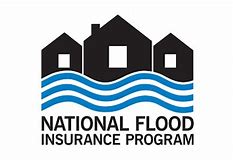Defending Risk Rating 2.0
 Congressional hearings continue on long-term reauthorization of FEMA’s National Flood Insurance Program (NFIP) which is set to expire September 30. More elected officials from coastal states are weighing in on the NFIP’s Risk Rating 2.0 “Equity in Action” pricing program set to take effect October 1. Among them, is U.S. Senator Bob Menendez (D-NJ) whose constituents make up about 217,000 NFIP policyholders.
Congressional hearings continue on long-term reauthorization of FEMA’s National Flood Insurance Program (NFIP) which is set to expire September 30. More elected officials from coastal states are weighing in on the NFIP’s Risk Rating 2.0 “Equity in Action” pricing program set to take effect October 1. Among them, is U.S. Senator Bob Menendez (D-NJ) whose constituents make up about 217,000 NFIP policyholders.
NFIP Reauthorization: Senator Menendez recently voiced concern that 80% of those New Jersey policyholders will see their premiums increase, with FEMA’s David Maurstad countering in published reports that without Equity in Action, 100% would see their policies go up. Menendez also criticized the NFIP’s Write Your Own (WYO) program, made up of 65 private insurance companies that are paid to administer the NFIP program, while FEMA pays any claim losses. Menendez said compensation for those WYO companies should be reduced.
Congress should also specify where categories of WYO expenses should be slashed. Of the approximate 30% for every NFIP premium dollar FEMA pays to insurance companies, there are specific expenses that could be adjusted to achieve some savings. We look forward to the Senator’s bipartisan NFIP reform bill that he says he is working on, based on similar legislation he sponsored last year with Senator Bill Cassidy (R-LA).
Mississippi Insurance Commissioner Mike Chaney has weighed-in in support of the new rating system, despite premium increases for some of his state’s residents. I applaud Commissioner Chaney’s leadership on this issue, for no one better than him understands that this program needs to be rebalanced.
The fact is that some rates will increase and others will decrease. As we’ve reported, Risk Rating 2.0 applies modern catastrophe modeling and correct actuarially-sound rates to the in-debt 50 year-old NFIP. FEMA’s Risk Rating 2.0 Florida Profile shows that 96% of current policyholders’ premiums will either decrease or increase by $20 or less per month. Roughly two-thirds of policyholders with older pre-FIRM homes (pre-1970’s) will see a premium decrease. As I told the Washington Bureau Chief for Spectrum News 13 and Bay News 9 earlier this month (How FEMA’s overhauls of flood insurance rates could impact you) I applaud NFIP for saying we can’t keep running this thing like a government program. We’ve got to run it like an insurance company, while encouraging the private market to step in, too.
Florida Potpourri: Meanwhile, around Florida, Sarasota residents will soon receive a 25% discount on their flood insurance premiums thanks to an improved Community Rating System score (more here). Farther south in Sarasota County, the town of North Port is fighting suggested FEMA flood map updates, as is Palm Beach County. New residences in manufactured home parks must now be built to federally established flood elevations in Charlotte County (more here). And the city of New Smyrna Beach has finalized plans to elevate nine home that have suffered expensive repetitive flood losses over the years. The overall project costs $1.9M, with 75% being reimbursed by FEMA, and the 25% local share being split 50/50 by each property owner and City, in a process the mayor has called “not fiscally sustainable (more here).
LMA Newsletter of 6-28-21

